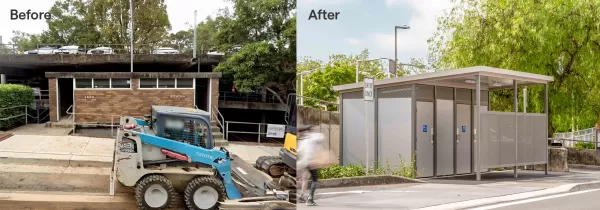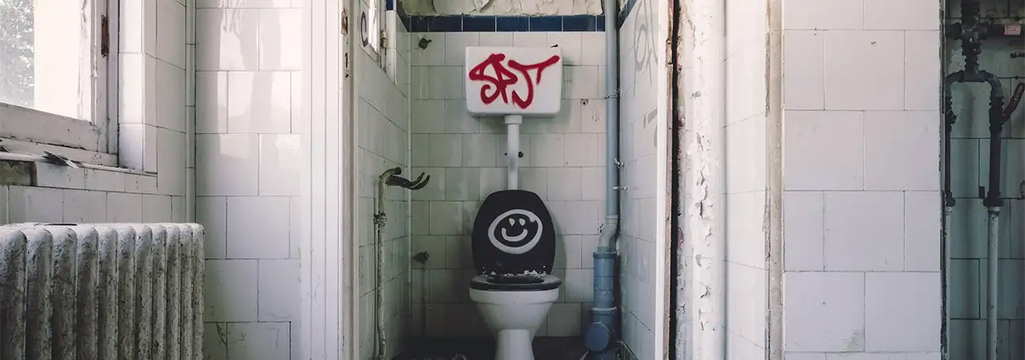Why Prefab Toilet Buildings Outperform Concrete/Masonry Construction

Choosing the right toilet building for public parks involves many considerations, and often includes comparing traditional concrete options. But that comparison isn’t always necessary. Here’s why prefab buildings offer a better alternative.
What local governments need from their toilet buildings
Local governments especially have a lot to get right when investing ratepayer funds on infrastructure projects. With competing demands of the community and their responsibility to deliver both quality infrastructure that delivers value for the investment — there are a number of things that require strong consideration.
The important considerations as they relate to public toilet buildings are:
- Vandalism — is the building vulnerable to vandalism or damage? If damage occurs, how easy and what is the cost of repairs?
- Maintenance — is maintenance simple, is effective cleaning easy and are parts available?
- Life Cost — is the building cost effective upfront? Is it vulnerable to vandalism or damage? How easy is maintenance and replacement of parts if needed? Is the asset life reasonable compared to the cost? What is the true asset cost over its life?
- Asset Life — will the asset be in working condition for long enough to justify its cost?
- Construction — is the multipurpose toilet building construction simple, quality and fast with minimal onsite disruption?
- User Experience — is it a pleasant environment for users, now and when the asset is aged?
- Appearance — does it look great and compliment the open space?

Why construction type matters
When making selecting a supplier partner for your public toilet building, there will often be proposals for masonry or concrete style buildings. These are commonly promoted as being the answer to vandalism and having a long asset life, however these claims don’t necessarily stand up on closer inspection.
Comparing different construction types
When making selecting a supplier partner for your public toilet building, there will often be proposals for masonry or concrete style buildings. These are commonly promoted as being the answer to vandalism and having a long asset life, however these claims don’t necessarily stand up on closer inspection.
Comparing different construction types
The table below dives deeper into the key purchase considerations, and how Modus toilet buildings perform better than alternatives on all fronts:
| Purchase Consideration | Masonry / Concrete Toilet Buildings | Modus Toilet Buildings |
|---|---|---|
| Vandalism | Large flat surfaces like painted concrete, masonry or even tiles are a prime target for graffiti vandals. Concrete toilets withstands impacts well, although when serious damage occurs sectional replacement is not possible, and patching/repainting is costly | Our standard internal MiniOrb sheeting does not offer a viable surface for graffiti — should small graffiti occur, surface can be easily cleaned. Tough sheeting and cladding with fully welded steel support framing is very impact resistant — in the event of serious damage, individual sheets can be replaced quickly and cheaply |
| Maintenance | Generally built with walls sealed to the ground, internal cleaning is time consuming to achieve a high quality clean, while grout lines and porous materials retain dirt and odour | With hardy and easy to clean materials, and gaps under the walls, Modus buildings can be easily washed through with a pressure blaster using strong chemicals and a good clean achieved |
| Asset life | 30 years + | 30 years + |
| Upfront Cost |
Upfront costs are extremely high, and not justifiable by lower life
cost or asset life length |
Modus buildings are often 40 — 50% cheaper than concrete and blockwork options, while having comparable a lifespan and lower maintenance |
| Lifetime Cost | Asset lifespan is comparable, however more difficult maintenance and longer term issues may result in greater lifetime costs and early replacement | With comparable asset lifespan, minimal/easy maintenance and more cost effective up front,the lifetime cost of Modus buildings is much lower |
| Construction Speed and Cost | Masonry and concrete toilets buildings that are constructed on site require multiple trades — meaning higher on site costs, lengthy build times, greater waste/pollution and community disruption | Modus buildings use a prefabricated modular kit form system that ensures fast, accurate and easy installation— lowering on site costs and minimising community disruption |
| User Experience | While good initially, these buildings tend to retain bad odour over years, even when cleaned regularly | Modus buildings stay fresh and comfortable for users throughout their lifetime |
| Design and Appearance | While blockwork is flexible, concrete tends to be more limited in the options that can be achieved. Appearance is generally good for these buildings and they can be customised as required | Modus’ unique modular system means almost any conceivable floorplan can be achieved. We also offer a wide range of materials, finishes and custom enhancements to make its toilet buildings a compliment to any open space |
Summary
In closing, local governments don’t need to make any compromises on what they want with their public toilet buildings. Our buildings have been designed specifically for the public realm, with no corners cut on any of the key considerations.
With Modus, we also make your project easy from start to finish by providing expert advice whenever you need it, our unique prefab modular kit-form system for fastest install, and offering pre-designed, engineered and compliant buildings that look great and can be customised to suit your needs.
Brick Toilet Replacement at Gordon Station
Modus delivered a modern replacement for an ageing brick toilet block at Gordon Station, working with Ku-Ring-Gai Council to install a durable, accessible, and visually appropriate solution for a high-foot-traffic urban environment. The previous facility was worn down and failed to meet Australian Standards, prompting the council to seek a compliant and futureproof alternative.


